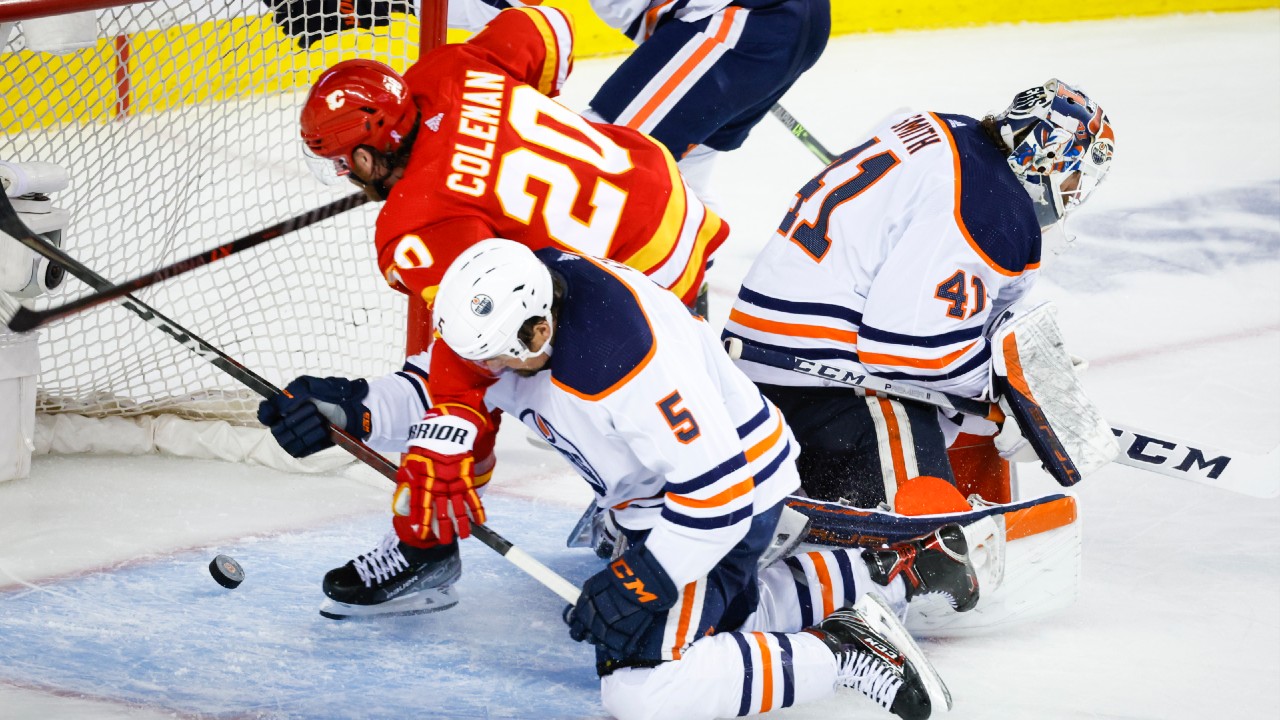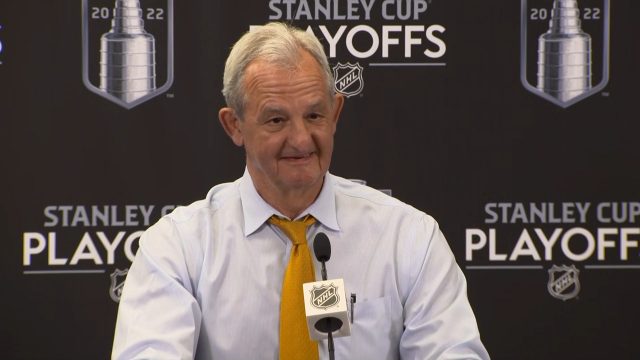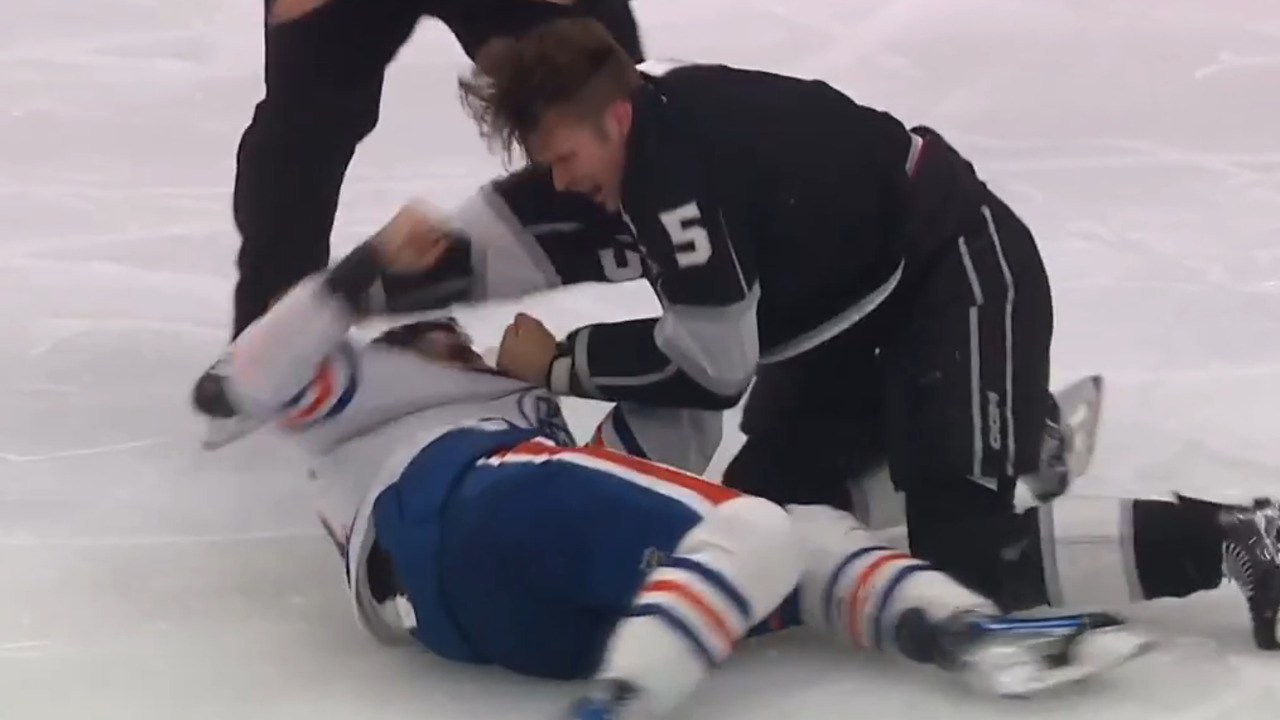
CALGARY — Despite what an angry, confused Calgary fan base thinks about Blake Coleman’s disallowed goal, the four men in charge of overturning it are convinced they got the call right.
Flames GM Brad Treliving is convinced they are wrong.
While everyone, including Treliving, agrees the call isn’t what cost the Flames the series, the reality is a huge percentage of people in the hockey world disagree Coleman’s late goal in Game 5 involved a distinct kicking motion.
“Last night it was unanimous amongst the four of us, the puck was pushed over the line in intentional fashion,” explained Mike Murphy, the NHL’s senior vice-president of hockey operations.
“You can stop a puck into the net and you can redirect it into the net, but you can’t drag or push a puck into the net. We saw him pushing the puck into the net.”
That doesn’t mean it was an easy decision.
“It’s as difficult a call as we’ve had the last few years,” admitted senior vice-president of hockey operations Colin Campbell, who has final say on decisions like these.
“We felt there was a distinct kicking motion and he propelled the puck deliberately into the net.
There’s no such thing as, ‘the blade has to be on the ice.’ You can kick a puck without taking your foot off the ice.”
Campbell and Murphy were huddled up in the NHL’s war room in Toronto with former player Kris King and former official Bill McCreary late Thursday when the Flames forward appeared to score the go-ahead goal off his skate with six minutes left in a 4-4 game against Edmonton.
As Coleman drove the net for a puck that was evidently trickling into the net anyway, his right foot got caught in Oilers goalie Mike Smith’s pads, while defenceman Cody Ceci was hanging off his back.
Just before he fell to the ice, his left skate extended into the puck, knocking it across the goal line.
All four men in the war room immediately started looking at replays, conscious not to share their initial thoughts aloud.
“Sometimes slow motion can fool you so we also look at it at regular speed,” said Campbell.
“We always try to draw upon consistency and, ‘is there any way we can allow this.’ Was he being pushed, was there a defection?
“We talked to (referee) Wes (McCauley) on the phone and after consulting with everyone we felt it was kicked in.”
Referee Eric Furlatt then stunned the Saddledome crowd, and a good chunk of the viewing audience, with the announcement that was followed later in the evening by Connor McDavid’s series-ending goal in overtime.
A well-deserved series win, no question.
And while Treliving was quick to insist he’s not blaming the series loss on the call, he disagrees with it.
He’s told the league as much.
“This has nothing to do with the outcome of the series, but this is the wrong call,” said Treliving, who had several fellow colleagues sending him videos of similar goals that weren’t called back.
“I honestly have no idea what the rule is, because there’s no distinct kicking motion. I throw my hands up and leave it to Toronto.”
Being victimized by the league’s video review system is nothing new for the Flames, who had a potential Cup-winning goal by Martin Gélinas overlooked by the league in Game 6 of the 2004 Stanley Cup final.
Eighteen years after being critical of the league’s handling of that goal, Gélinas was shaking his head again Friday.
“It was a terrible call,” said Gélinas of what he saw as the league’s latest misstep.
“A kicking motion is kicking — it’s obvious, a falling motion is your momentum kind of taking you into the net.
“It’s a grey area that they have to kind of figure out. It doesn’t mean we would have won the series, but it could have extended it. To make a call like this, when the game is on the line? Wow.”

Campbell said what happened in 2004 helped prompt the league to install several more cameras, including under the crossbar, as part of a concerted effort to get things right as often as possible.
“People are going to go right back to 2004, but we’ve come a long way since then with reviews,” said Campbell.
“(Flames owner) Murray Edwards was a big proponent of adding more cameras, never mind the cost. Do what’s good for the game.
“I’ve often said kicks are still the toughest, even though we don’t have that many. It was a difficult call.”
Despite Treliving’s discussions with series supervisor Don Van Massenhoven during the ensuing intermission, obviously nothing could or can be done to overturn the call.
However, moving forward, what the Flames and everyone in hockey have always craved is a consistency many are questioning here.
Video of a Winnipeg goal against Calgary this year, as well as a Vegas goal against Seattle, show what look like far more definitive kicking motions than Coleman’s that were allowed to stand
The league’s YouTube video on the rule also has an example of a good goal that’s hard to differentiate.
At the end of the day, everyone understands there’s a human element to all this and tough calls have to be made by someone.
“I understand the passionate part — we’re in the playoffs, and this isn’t just Calgary playing Minnesota, it’s Calgary playing Edmonton, I get it,” said Campbell, pointing out there is over 175 years of NHL experience between the four men making the decision.
“It goes without saying we try to keep the passion out. I know it’s tough and it was a close one, and I can assure you if the decision goes the other way there are just as many people upset 200 miles north of you.”
It was an unfortunate way to end one of the most entertaining series the league has seen in decades.
“It’s a thankless job and we realize the significance of the play and the time of the game and we knew it was a monumental play,” said Murphy.
“It was a difficult call and you hate for a game to have to be decided on a play like that, but when you call for video review in games someone has to judge it in a fair and impartial way, and that’s what we did.”




